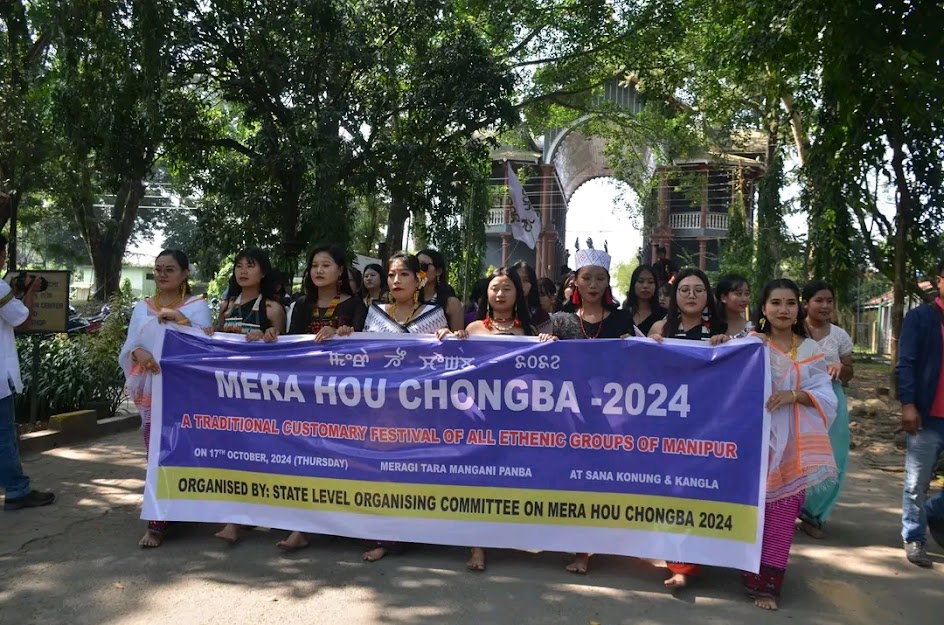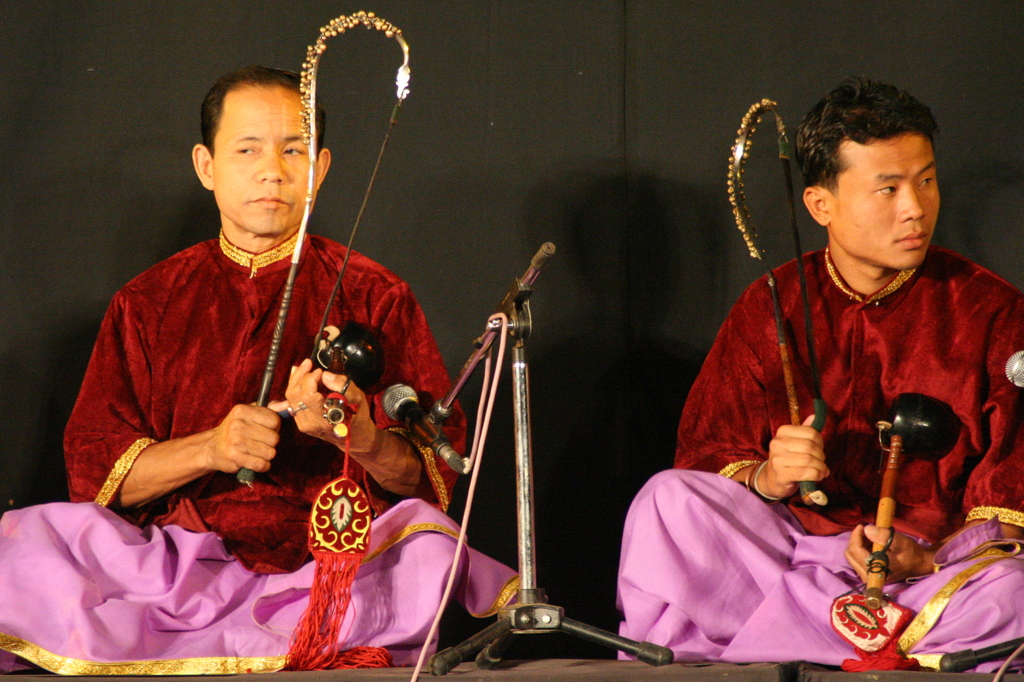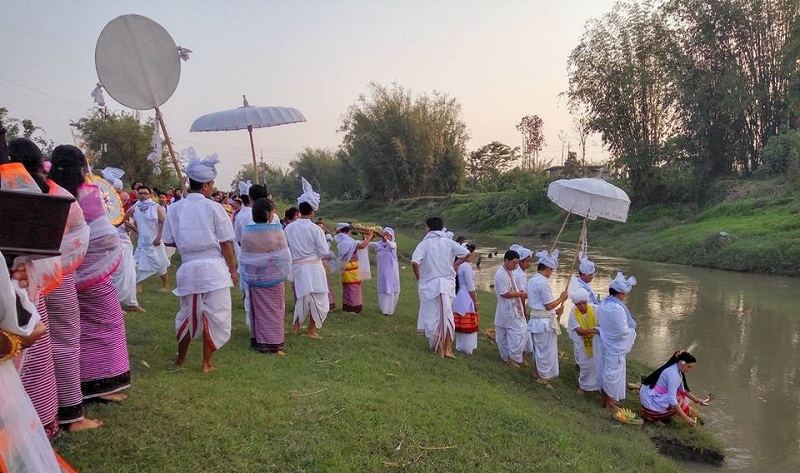Luira Phanit festival of Tangkhul is one of the most important festivals. This is very auspicious for the community. Luira Phanit or Luita Phanit is widely celebrated at Poi (Pui), Shirui, Lunghar, Longpi, Hunphun and various other villagers in Ukhrul districts from 27 to 29th January 2014.
We were fortunate to enjoy the Luira Phanit festival in the Poi Village of Ukhrul district this time along with my friends. Three days of our stay in this small village, bordering Myanmar was a never forgetting moment of my life.
Poi is around 150 kilometers from Imphal. We travelled for 16 kilometers from the Awang Kasom (Ramphei) Check Post on the Jessami road. The road is motorable now due to PMGSY. However, we don’t know about accessing the same road during the monsoon season as we could see lots of pot holes and big carters on the road. Unfortunately, we have to drive our Bolero across the river water as no bridge has been constructed till now.
We wondered how the villagers will travel to Ukhrul or Imphal in case of any emergencies like healthcare or other basic amenities. Myanmar is hardly one and half hour walking distance from the village inhabited by 2500 villagers, having 357 households. International border pillar numbers 126 and 127 divide the Somra Tangkhul villagers residing in Myanmar from this village.
This seed sowing festival of Tangkhul tribe is not only famous for song and dance, rather it has a very religious and customary symbolism of the Tangkhul community residing in the region. This is the time when families keep their food out in the open and eat out, competition among each family over the best culinary skills of cooking pork – pieces as big as a puppy. The meat should be cooked soft enough for the old and the young to enjoy. Those who eat must never forget the taste of pork cooked with “Hao Chillies”- its color and aroma. This is also the time when the village serves the best rice beer as well.
During the festival, the village chief or Head Man commenced only after the chief of the village had first sown the seeds. The Village Chief has sacrificed Chicken and pork on the first day and pray to God for good harvest. He would then give the seeds and other cultivable crops to the villagers to reap a good harvest in the village. The old practice of “Harkho Khayeng” and “Kla Kapa case” were slowly dying from the Luira Phanit festival, which need to be conserved and promoted for the future generations.
Before the advent of Christianity, Luira Phanit was celebrated for 12 days. But slowly the festival was celebrated for three days now. This year, on 27th January, the festival start with meat killing for the function and good quality of wine were brewed in some Tangkhul villages which does not strictly follow Christianity doctrines. The baptized Tangkhul did not touch wine as it if forbidden for them.
Once we reached the Village, we got the news that we have to wear the head gears worn by Tangkhul men. We arranged to get only one piece, we have to make a head gear from bamboo and wear it to attend the function, else a fine will be imposed on us for not having it during the festival.
Another thing we observed during the first day was also on not attending at the inaugural function. Everyone must attend the inaugural, all houses must be locked. We were busy making head gears inside the room and could not attend it.
When the organizing committee members came to inspect, we clarify that we were busy in making the headgears to attend the remaining functions and our problems were excused. It was mandatory for every woman, men, girls and boys to attend this once in a year festival to welcome at the best level and enjoy before going to field for cultivating crops for bumper harvest.
On the second day, that is 28th January, pork was cooked and each family ate their food in the courtyard which were inspected by the festival organizing committee to see which family cooked the best pork and prizes were awarded as well.
The meaning of this Seed sowing festival is that “Let’s enjoy happily with good food and relax our minds since we would be working in the field to produce good crops for the family.” People used to spend time leisurely in singing and dancing. Few modern games like Volleyball are now played during the festival. It was also worth watching Volleyball contest between Married men and bachelors; married women versus young girls.
The second day was a festive full of games like “Tug of War” among men and women. A similar form of Kabadi called “Raikhangnathot” was played in the early period which was not played today. What we have witnessed in “Tug of War” was the unity and courage of the women to prove their strength and superiority. When men were about to win the game, the spectators from the women’s side, went and took part to overthrow the men.
This shows Tangkhul women will never want to defeat – a sign of great civilization and courageous community was seen in this game. We learnt that the rope (commonly roots of huge trees) used in the tug of war should break once, which is a good omen among the Tangkhul community. And it is not surprising that women won the Tug of War. We remembered a Tangkhul aunty saying, “Valley women are like pig – eating and sleeping when their men work whole day. Hill women are like buffaloes, ploughing and toiling in the farm for 3-4 months.”
“Lakhangamei” (meaning virgin dance) which attracted hundreds of villagers is a very beautiful dance form of the Tangkhul community. It is a very unique dance form which only the virgin girls perform in traditional attire. We could not watch this dance as we have to visit some other place during the festival. However, it has a very interesting story behind this dance. During the dance, if any, of the girls in the dance group is attracted, the boy can approach and propose her to meet within the month of March, otherwise by April, she will reject the proposal.
In today’s world, every community must promote and take part in the Luira Phanit festival and help the Tangkhul community to preserve their own custom and culture. For in every festival, we there is always a linkage between the hill and the valley history, which time have erased in its course.
We have learned a lot of things from this year Luira Phanit – the hospitality, the bonding of hill and valley people, the cultural symbolism before the advent of Christianity in the hill and Hinduism in the valley. If we know the sentiments of the hill people and focus development of the State in these areas, we could change the outlooks of the hill people towards the valley people which we often called verbally “Ichil Inao”.
Let us start this 2014 with some development work in the hill districts and help with healthcare, connectivity of roads, education, water and providing facilities which the valley people have been enjoying since last few decades. This is the message of “Luira Phanit festival ” for 2014
(C) Naorem Mohen
The writer can be reached at Twitter @laimacha
Editor | Signpost News







